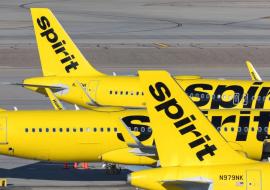Antitrust, Travel Industry Experts Call for Investigation of Proposed US Airways and American Airlines Merger
In a jointly produced White Paper released, the American Antitrust Institute (AAI) and Business Travel Coalition (BTC) review the competitive issues raised by a possible merger of US Airways and American Airlines.
The White Paper, which has been sent to the U.S. Department of Justice (DOJ), indicates that a merger between US Airways and American could: substantially reduce competition on a number of routes, create regional strongholds at key airports across the country, and starve smaller communities of important air service.
The proposed merger would combine the fourth (American) and fifth (US Airways) largest airlines nationally, making US Airways-American the largest U.S. carrier with a combined share of over 20 percent.
The White Paper explains that a US Airways-American combination would occur against an industry backdrop marked by a dwindling fringe of low-cost carriers and increasing questions about whether Southwest any longer exerts significant competitive discipline.
The report notes that a DOJ investigation into the proposed merger would be informed by lessons from the effects of previous legacy mega-mergers (e.g., Delta-Northwest and United Continental) on fares, service, and choice.
The White Paper flags a number of key issues for investigation, including the potential effect of the merger on enhancing the buying power of US Airways-American and the oneworld alliance to which it would likely belong.
While AAI and BTC do not make a recommendation as to the legality of the proposed merger, their White Paper raises important questions that deserve investigation before a decision is made.
AAI and BTC provide nine major policy recommendations regarding a US Airways-American merger, noting that their analysis indicates enough smoke to indicate a potential fire and that the merging parties bear a heavy burden in demonstrating that their merger would not be harmful to competition and consumers.














